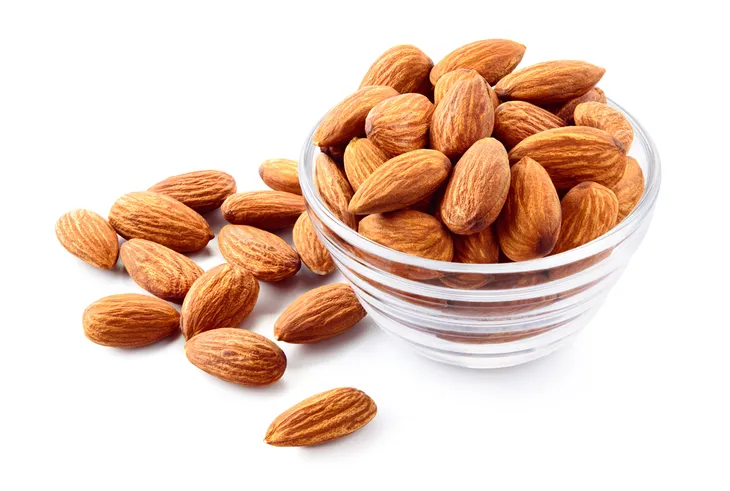Diabetes – it’s a disease that affects more than 100-million Americans (as diabetes and prediabetes), according to a 2017 report from the Centers for Disease Control and Prevention (CDC).
While there are medical methods to help manage diabetes, your diet plays a huge role – what you take in on a daily basis can make a big difference, and in many cases it only takes a relatively small change to your menu. While monitoring the sugar and carbohydrate content of foods is important if you’re diabetic, you also need to pay close attention to fat content to manage the risk of heart disease. Here are 12 foods to avoid, and their safer (but still satisfying) alternatives…
Want diabetes content delivered straight to your inbox? Sign up for our Diabetes newsletter and receive exclusive news and articles written from our team of diabetes experts.
Meat May Not Meet Your Needs
We all need a good source of protein, but it doesn’t have to come from beef or pork, which are often rich in saturated fats (one of the “bad” fats), says the American Diabetes Association.
There are many plant-based sources of protein to choose from, and they often contain “healthy” fats and fiber (but they also can be rich in carbohydrates, so be sure to read the labels). The association suggests trying baked beans, hummus, lentils, and almond butter, to name a few. If you have an unstoppable red meat craving, you can limit the impact by selecting the leanest options that have been trimmed of fat, it adds.
Fries or Fruit?
Okay, we know it’s hard to resist those crispy fries as a side to your lean meats. But remember that fries are also often loaded with fats and sodium – Stack.com notes that typical restaurant orders of fries on the side contain 22-grams of fat (including 4.5-grams of saturated fat).
A good green or fruit salad can be a good alternative to French fries, although not always. Some canned fruit salads can be loaded with sugar, so consider making your own from fresh fruit and adding them to greens. Even if you have a green salad, be wary of the dressing, which can be filled with fats – the same source says a restaurant Caesar salad on the side contains 26-grams of fat (including 7.5-grams of saturated fat).
White vs. Red Pasta Sauce
Fettuccini Alfredo is an American favorite, but it’s also quite rich in terms of fat content, according to TheHealthSite.com, which does a comparison of this “white” sauce versus the traditional “red sauce” that many pastas have.
The staple ingredient of the red sauce is of course tomatoes, which are a good source of lycopene and Vitamin C, according to the source. White sauce relies on cheese and butter for its creamy richness, which is delicious, but it also contains “loads of cholesterol and saturated fat,” it adds. White sauce is not all bad news – it offers up calcium and protein from the milk content, says the source.
‘Energy Bars’ vs. Other Snacks
Sounds easy enough – grab an energy bar, and you’re good for a few hours, right? Not so fast, says Health.com. They’re not all made the same. “They may seem like a healthful snack choice, but many snack bars contain high levels of sugar and carbs,” it says, adding that these numbers can be up to 450-calories, and 60-grams or carbohydrates.
The site says you should look for “lower carb treats” to curb your cravings. This can include 1-cup of “light” popcorn, 10-Goldfish crackers (they’re not just for kids), a piece of string cheese, 15-almonds, or a sugar-free popsicle – all of which contain fewer than 5-grams of carbohydrates, it adds.
Liquid Fruit vs. Solid Fruit
What could be better than taking a piece of delicious fruit and making it into a drink, so you can ingest it even quicker? While the ads sometimes depict someone squeezing oranges directly into a carton, there’s a lot more that goes into typical fruit juices – they’re just as high in sugar and calories than a can of soda, according to Health.com.
Instead of drinking juice, reach for the real thing, it suggests. A piece of low-sugar fruit is less concentrated than it is from juice, which won’t result in the same spike in blood sugar, it explains. Some ideas for lower-sugar fruits include strawberries, blackberries, grapefruit, avocados, and watermelon.
Refine Your Breakfast – The Right Way
Health.com also notes that many “refined” breakfast cereals (while listing off a lot of vitamins) can be sweetened, leading to a spike in blood sugar. Even oatmeal, considered to be safe for diabetics, can have added sweeteners, says the source.
A healthy alternative is high-protein meal – think about an egg white omelet (yolk can raise the risk of heart disease, particular concern for diabetics) containing veggies and turkey, or Canadian bacon with a small slice of low-carb bread, it offers.
Trail Mix Might Be the Wrong Path
LiveStrong explains that trail mix has a lot of the things you want in your diet – including nuts and seeds. However, you can also get other ingredients in trail mix that can be high in calories from fats, adds the source.
However, avoid trail mixes that contain bits of candy or sugar-sweetened dried fruits, it adds. Livestrong has a short guide for a DIY trail mix, which contains nuts, soy nuts, air-popped popcorn, puffed rice or toasted oats cereals. Remember – don’t eat large portions of any trail mix unless you’re getting some exercise by hiking a trail, for example.
Be Smooth Without Getting Too Juiced
This can be a tricky one – while both fruit and veggie smoothies can be a great, healthy alternative to a sugary snack, store-bought smoothies can be high in sugar from frozen yogurt or fruit juice content, explains Livestrong.com.
When looking for a fruit smoothie, search for “all-fruit” smoothies, or consider a blend of fruits and vegetables, it adds. “These typically do not include sorbet, frozen yogurt, dairy or soy,” it explains. The source has a quick recipe for an ideal smoothie at home that contains both fruits and greens – 1/2-cup of apple juice (presumably low-sugar), 1-orange, 1-ripe banana, 1-cup of blueberries, and 2-“packed” cups of kale or spinach. Sip it slow.
Pastries vs. Muffins
Yeah, we get it – you want something sweet with your morning coffee to motivate you for the commute to work. Breakfast pastries – including donuts and toaster pastries – are a big offender because while they give you the sweet fix you’re craving, they’re also high in fat, carbohydrates, and even sodium, notes Health.com. It says cinnamon rolls “may be the worst,” containing more than 800-calories.
Instead, train your palette to love a whole-grain English muffin or a brown rice cake topped with peanut butter and some low-sugar jam, it suggests. Your body will thank you for eating these less-processed alternatives.
Don’t Get Too Sweet on Chinese Food
A good Chinese takeout meal is hard to beat in terms of flavor and satisfaction, but it turns out this is 1-of the worst choices you can make as a diabetic, according to Health.com. Popular choices like orange chicken and sweet and sour dishes are particularly high in fat, sodium and calories, it says.
If you like the veggie content of Chinese dishes, then try steaming your own vegetables at home and using low-sodium and low-fat condiments and flavorings, it suggests. The source also says to “skip the white rice and noodles” and have brown or wild rice in place of them.
Not All Fruits are Equal for Diabetics
While fruits in their natural form are generally a good choice thanks to vitamin and fiber content, some are higher in sugars than others. EatingWell.com posted an article that’s simply titled, “The Best and Worst Fruits to Eat If You Have Diabetes,” so we’ll share some advice from it here.
In the “good” column, the source lists blueberries, blackberries, raspberries, dark cherries, and kiwi. These have a low influence on blood sugar, also called a “‘low glycemic load,” says the source. Meanwhile, while bananas, mangos and pineapple (as well as some apples) also offer a good source of fiber and nutrients, they contain more sugar than the aforementioned fruits, and eaten on their own can raise blood sugar relatively quickly, explains the source. You don’t have to avoid them – but try pairing these higher-sugar fruits with healthy-fat foods such as walnuts or even mozzarella cheese to avoid a blood sugar spike.
Think Twice About The Rice
Rice is an inexpensive, nutritious and filling staple food, but consider what kind of rice you’re eating when it comes to managing your diabetes. Health.com says that plain white rice is perhaps worse than you think when it comes to controlling blood sugar levels, and can even be a risk factor for developing Type 2 Diabetes in the first place – 11-percent higher risk for each additional serving per day.
Brown and wild rice both have higher fiber content, which will ” slow the rush of glucose into the bloodstream,” adds the source. Eating brown rice 2-or more times per week was also shown in a study to decrease diabetes risk, it adds.















